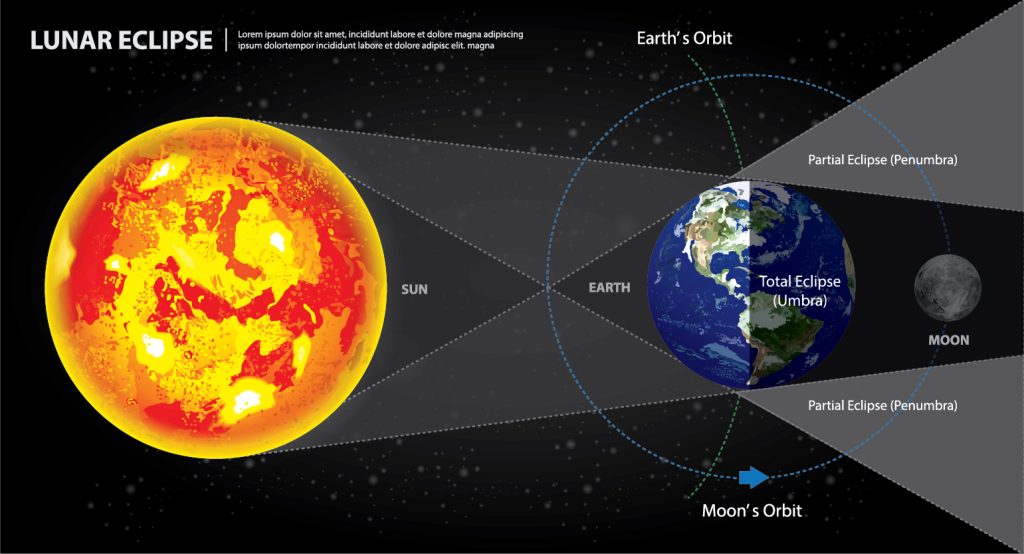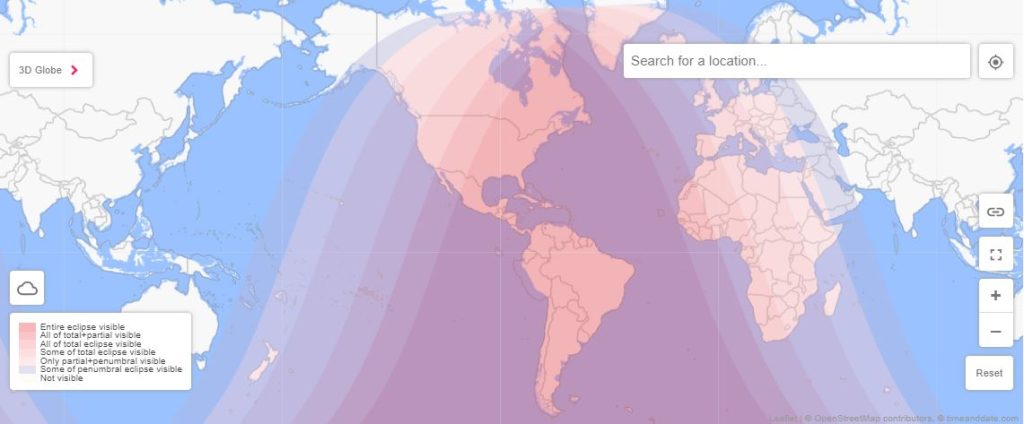Billions of people in Africa, Europe, North America, and South America will witness a very rare blood moon lunar eclipse tonight. The best time to witness tonight’s total eclipse is 9:11 p.m. PST (peak time) and will last until 9:53 p.m. PST. The partial eclipse will end at 10:55 p.m. PST. The next and last lunar eclipse of 2022 will occur on November 8.
A total lunar eclipse occurs when the Earth aligns between the sun and the moon to cast a shadow on the moon’s surface. This alignment results in the Earth blocking sunlight from reaching the lunar surface.

According to TimeandDate.com, a total lunar eclipse has seven stages:
- Penumbral eclipse begins: This first stage is not that noticeable to the naked eye and occurs when the penumbral shadow begins to move across the moon.
- Partial eclipse begins: The umbra begins to cover the moon. This is usually the first part of the eclipse visible to the naked eye.
- Total eclipse begins: As the umbra completely covers the lunar surface, the moon turns a blood-red color.
- Maximum eclipse: This is the stage of the eclipse with maximum coverage of the lunar surface by Earth’s umbra.
- Total eclipse ends: Earth’s umbra begins to move away from the lunar surface as the eclipse begins to wrap up.
- Partial eclipse ends: Earth’s umbra leaves the lunar surface.
- Penumbral eclipse ends: Earth’s shadow is no longer cast across the lunar surface.
What makes this lunar eclipse rare is that it is classified as a “super flower blood moon.” A moon is “super” when its orbit reaches one of its closest points to Earth — also called “in perigee.” May 15, according to the Farmer’s Almanac, is the time when flowers are in full bloom in spring in North America.
Tonight’s “full flower supermoon” will appear to be a rusty red color due to the sunlight interacting with Earth’s atmosphere. This an optical illusion is caused because the atmosphere will scatter outward the shorter blue wavelengths leaving only the longer wavelengths like reds and oranges.





















